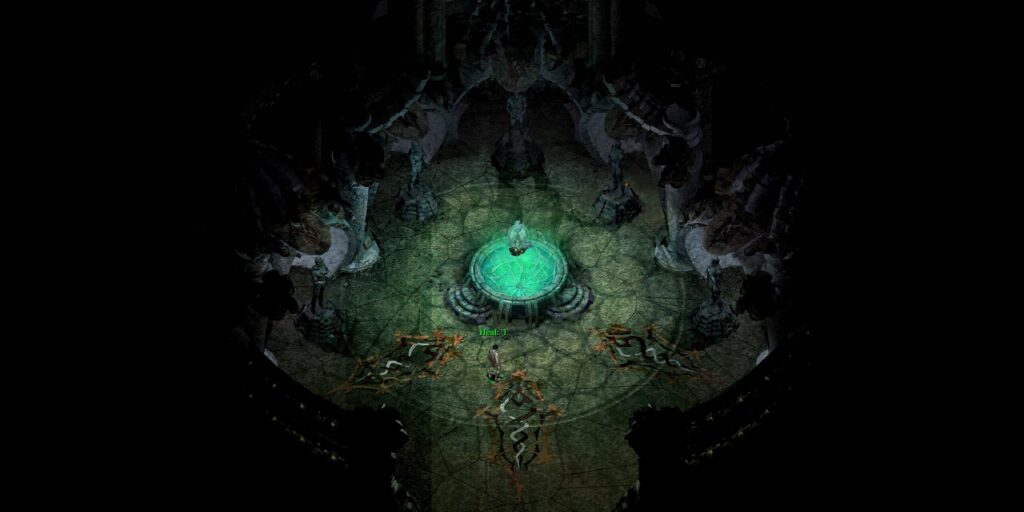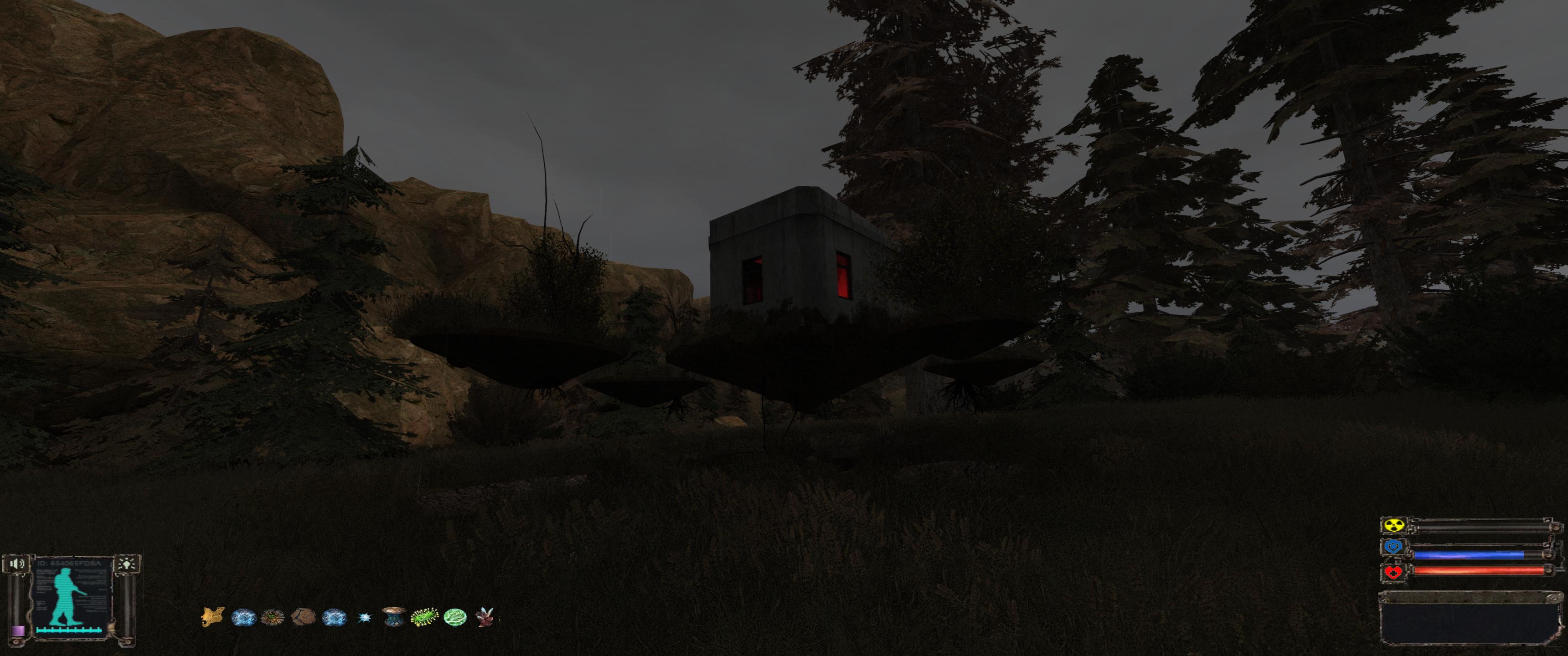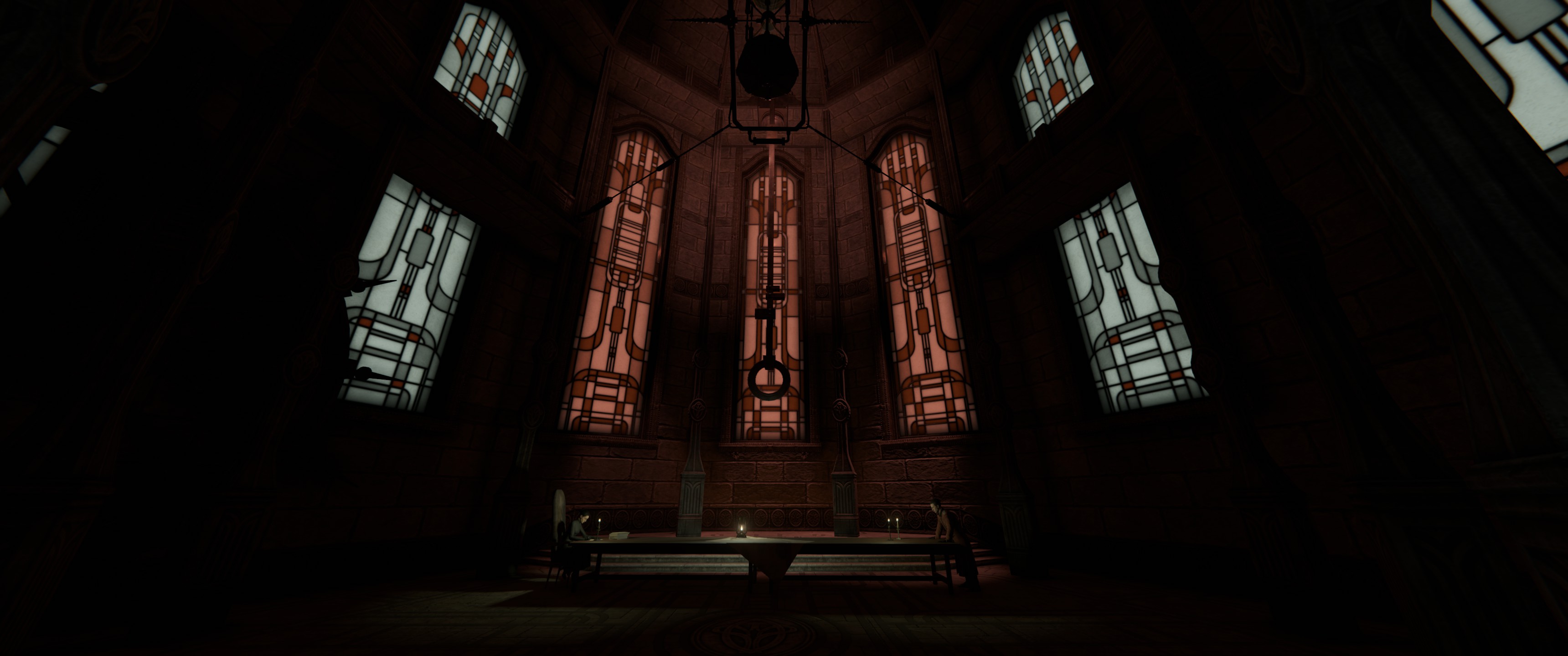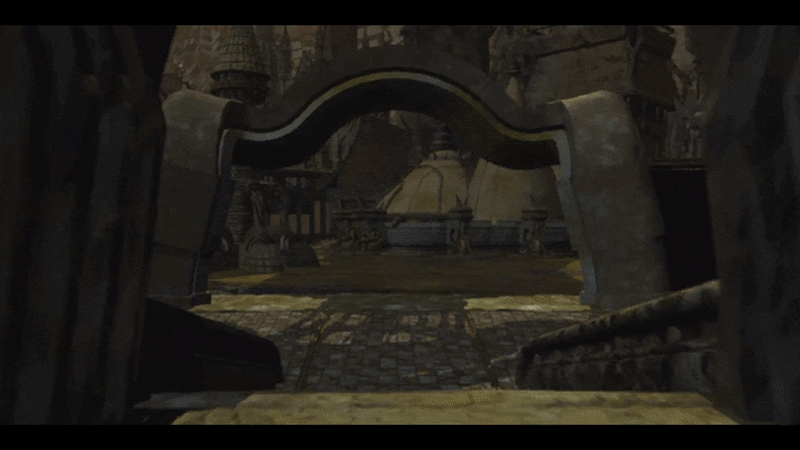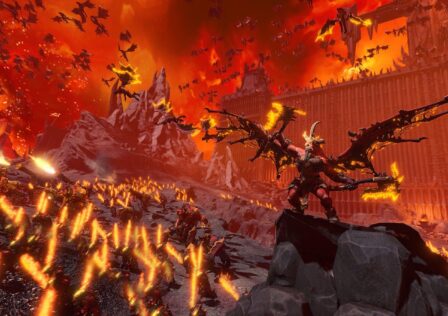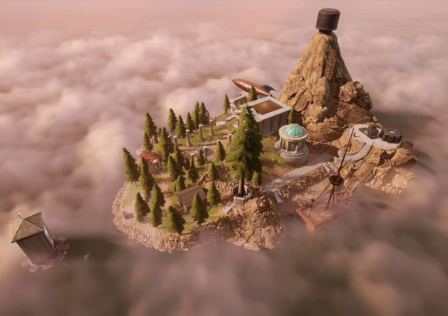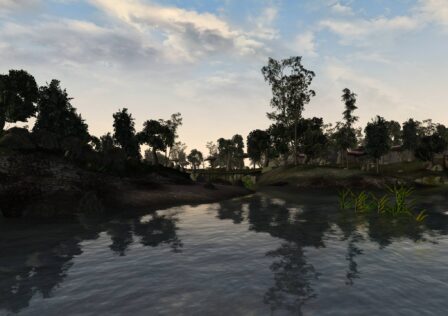A modern trend in gaming has been less linear games with more side quests. But in the majority of these modern nonlinear games, side quests are merely repetitive, templated basic fetch quests, assassination quests, clearing out some area, or something comparably simple that just boils down to “Go to this marked location, take care of some generic task for the 100th time, then come back to me for your reward.” This is the norm for nonlinear games including RPGs, such as those from Bethesda Game Studios (The Elder Scrolls V: Skyrim, Fallout 4), those from BioWare today (Dragon Age series, Mass Effect: Andromeda), recent games from Obsidian (e.g. The Outer Worlds, Tyranny, Pillars of Eternity), even those from Rockstar Games.
This even applies to main quests in games such as those from Bethesda Game Studios, Obsidian’s recent games, and some of BioWare’s recent games, but most gamers are at least aware that better main quests exist in such nonlinear large scale games (The Witcher 3 taught most younger gamers this), but it might come as a surprise to many that there are games with entirely unique side quests (opposed to templated and repetitive) that tie into the story in some way, opposed to being an isolated menial task. Side quests as great as the main quests even.
In this article, we will go over some of the nonlinear games that have incredible side quests, and give examples of such side quests, just to let gamers know that such excellence does exist in the gaming industry. It is not an exhaustive list of any kind, but will highlight some very important examples and name some important games. This article does contain some spoilers.
Old Good Stalker Remastered (OGSR)
OGSR is a large scale overhaul mod for S.T.A.L.K.E.R. Shadow of Chernobyl, one of the best such mods ever invented. This mod has some of the best side quests ever designed, making it just one of many examples of modders outshining professional game designers.
Example #1:
The Klondike – OGSR is roughly a 50 hour story experience, and it has a side quest chain that spans the majority of it. In essence, the quest is about learning about a famed “Klondike” artifact cache hidden somewhere deep in The Zone. The quest is activated unexpectedly while performing another series of side quests; you can come across the diary of a stalker belonging to a group of treasure hunters seeking out the Klondike. Something terrible seems to have happened to them, so after reading their group diary (which itself provides an intriguing mystery) you’re tasked to track down the members of this group and get more information out of them. It is entirely up to the player to pursue this.
Tracking down each member results in its own unique side quest that branches off the main Klondike side quest. We won’t go into each and every one, but for example one of the simpler encounters with one of the group members involves going through a sort of spatial anomaly puzzle to get him a unique artifact, since he couldn’t figure out how to do so. Another, more substantial one, involves going to another location and asking around about the stalker you’re looking for. Ultimately, only a sort of hermit living deep in a huge forest has seen him, and apparently he was searching for a nearby mythical artifact known as Dark. You must follow in his footsteps.
At this point in time, the player is given a book to read that tells the legend of the Dark Stalker and his pet Pseudodog. This legend serves as an interesting new mystery of The Zone, something the original games have too few of. This alone is a success, even though it’s just one piece of a much larger puzzle. After reading this book, you have to go find this Dark Stalker and his dog since he may have been the last person to see the person whose trail you have been following. You do indeed meet this legendary figure, and learn that the stalker you’re following did indeed try to obtain the Dark artifact, but in order for you to get there you must first obtain a Light artifact to protect you from the mysterious, unique, deadly energies surrounding the place. So the two of you and his dog of course go and retrieve the Light artifact, something only the Dark Stalker can do, and once he gives it to you you’re off to go get the Dark artifact in this mysterious, one of a kind place.
Getting into that house involves solving a spatial anomaly/teleporting puzzle that’s simple in nature, and then you obtain both the Dark artifact and the info you need, concluding this single branch of the Klondike side quest.
The last branch off of this Klondike side quest I’ll mention involves discovering a new type of anomaly and working with certain characters and unique equipment to try and discover its nature. This leads to another new mystery of The Zone, some twists and turns involving a deception, but it adds so much to this already gargantuan Klondike side quest line.
But one of the most extraordinary things about the Klondike side quest is how it coincides with another massive side quest chain, Kulgavy’s bandit quest line. You can join this Bandit gang, leading to its own experience, and this is totally on the side. It introduces you to Russian gangster culture, which in itself is a success. But the only way you can join this bandit gang is by selling the leader, Kulgavy, the Klondike info you’ve collected thus far.
Kulgavy has his men follow up on the Klondike info, therefore they pursue the information described above. This shuts the player out from all those side quest branches, like the aforementioned Dark Stalker quest and the other two I mentioned, as Kulgavy’s guys find the location of the Klondike. After you wrap up the Kulgavy’s bandit side quests, which can involve overthrowing Kulgavy, you and whichever bandit remains in charge after that affair pursue the Klondike itself in Dead City. Alternatively, if you don’t join these bandits, then after following up on every single lead like the ones mentioned above, then you yourself will learn the location of the Klondike and can pursue it. It is located in the most mysterious location in OGSR, and involves clever use of a sort of spatial anomaly that is used to conceal the Klondike cache. If you or the bandits have followed up on every lead, then you know how to dispel the spatial anomaly and obtain the Klondike cache.
So just to reiterate:
- The Klondike side quest chain spans most of the 50 hour game/mod.
- It branches off into separate side quests where you follow up on leads to discover the location of the fabled Klondike artifact cache, and each of these branching side quests brings something unique to the table, usually creating a new unique mystery that adds to the world building. The Zone is a mysterious place after all, all these new mysteries add to it.
- Or, instead of following up on the leads yourself, you can join a particular gang of bandits, with this serving as its own massive side quest chain that introduces the player to Russian gangster culture, and they will instead follow up on the leads -> nonlinear quest design.
- The conclusion of the quest introduces one last new mystery of The Zone just for you to think about, but also leads you to one of the most memorable locations in the franchise (unique to this mod).
Example #2:
Dead City – One of the most unique locations in the franchise, OGSR builds up this location as a terrifying mystery. You learn it is inhospitable particularly at night as people go insane for some unknown reason. As a side quest, you can explore the reason for this. If you stay out at night, you will regret it and you probably won’t survive an entire night. By working with some of the survivors in the city, who hide out in a bunker that protects them, you will learn that the cause for the terrors of Dead City is a uniquely powerful psychic mutant. You will eventually come across the lair of this mutant, which introduces the only underwater gameplay in the entire game. The gameplay is unique and the lair is creepy, and finally coming closer to unraveling this mystery is an incredible experience. Not templated, not repetitive, it is one of the craziest mysteries in the game.
The nature of this mutant, known as the Master, also separates it from every other in the game, and it’s just a side quest. It takes a lot of inspiration from Fallout’s Master for sure, without being an exact clone.
I will not go far into individual examples in Pathologic 2, because this is one of only two nonlinear games I’ve played (and I mean much more open than the likes of Dishonored and Thief for example) where every single quest is one of a kind. You don’t do the same thing twice. Even only a minority of linear games achieve this. The same amount of artistic detail went into each and every one despite it being an open world game.
Pathologic 2, which we reviewed here, takes place over the course of twelve in-game days, during which you must cure a plague or else the town gets bombarded by artillery. It is one of the most dynamic and procedural story driven games ever created, making most RPGs and games such as those from Telltale appear static in comparison.
Every time you play the game you will see different side quests in different places. The occurrence of some of them is chance based, others are according to prerequisites. You also cannot do all of the side quests on one playthrough due to insufficient time. You must accept failure in this game as some failure is inevitable.
This side quest serves as an early glimpse into the mechanics of the plague, but it’s a lot more complicated than what you see here…
Side quests throughout Pathologic 2 serve as world building by introducing new elements of all kinds, whether related to how the plague “works” and spreads (and this is inherently tied into the story thematically) or just adding further mystery to it, to introducing or expanding on a subculture within the town (especially the Steppe), or maybe just very important character development such as the one where you can arrange a meeting with your childhood friends to catch up. In order to go over the types of quests in Pathologic 2, you have to actually address every single quest in this 25 hour open world game individually because every single one is utterly unique, a level of detail I’ve only seen in one other game which is the final one in this article.
This side quest introduces a character that surprisingly turns out to be outright appalling and disgusting, and challenges the player’s morality with her.
Once again, there aren’t just a few examples of extraordinary and unique side quests in Planescape: Torment, a 20-25 hour nonlinear RPG. Every single side quest is unique, adding to the story in some way whether thematically or mechanically, and often involving different gameplay (tasks/actions). I’ve only seen this level of detail in this game and Pathologic 2 as described above.
Side quests pretty much always introduce you to a unique, memorable character encounter who serves no greater purpose in the main story, but has instantly distinguishable behavior, mannerisms, personality, speaking patterns, more like a book than a game. Whether the character is Reekwind, aptly nicknamed for a stenching curse he received, or O who is literally some sort of embodiment of the letter O from our alphabet, or a uniquely effective salesperson and shopkeeper, or Mertwyn the Headless who is in fact headless. There’s no end to them. Every person you can have a conversation with is a uniquely distinguished character, more than any other game in existence.
The side quests of Planescape: Torment often introduce or expand on new, weird elements of the Planescape universe. No game has better world building than Planescape: Torment, as it leverages the brilliant Planescape campaign setting created by David Cook and remains the best story ever written for it. You can learn about the unique keys to different portals in the game world, interact with bizarre and one of a kind magical items that tell a story of their own, converse with other characters about philosophical topics relating to the Planescape world or something else, you can stumble into another realm and locate a unique potential companion there, yet despite all the weirdness there is an underlying sense of cohesion and even logic that binds it all together into something brilliant, unlike its spiritual successor Torment: Tides of Numenera which is just an undisciplined incoherent mess.
But as with Pathologic 2 (and no other game I’ve played), in order to go over the types of side quests in Planescape: Torment (and main quests), you’d have to individually address each and every one since they are all truly unique. So rare that I’ve only seen these two games accomplish this in all my years of gaming.
Of course, these are not the only games with distinct side quests that don’t just live in isolation and consist of repetitive, templated gameplay. Every side quest serves a greater purpose in Fallout, Fallout 2, and Vampire: The Masquerade – Bloodlines as well, although those side quests rarely have unique gameplay compared to the rest of the game (which isn’t even a bad thing or a shortcoming, at least not for these specific games). A mix of great and utterly forgettable side quests exist in Arcanum: Of Steamworks and Magick Obscura, other S.T.A.L.K.E.R. mods beyond the aforementioned OGSR are full of truly unique side quests.
But with these examples, we hope to illustrate that side quests can and have been used for more than just templated repetitive gameplay that lives in a vacuum. They can wonderfully tie into the main story, such as some of the memories you can optionally uncover in side quests during Planescape: Torment, or tell their own rich story with their own themes, or add to the world building of the game by introducing or expanding on new elements. Sure, Bethesda Game Studios and BioWare and Obsidian may never reach those heights again, but look to past games you might not have played as well as lesser known gems such as mods (since modders are free to be more creative than AAA game developers limited by publisher demands), indie games, or games published by lesser known studios such as Pathologic 2.

